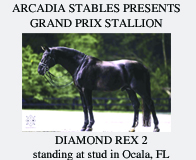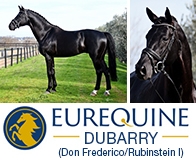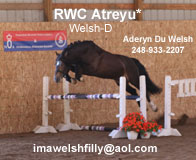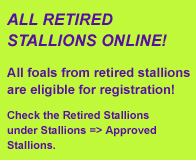Handlers should enter the mare in a leather bridle when the jury
indicates, and bring the mare to stand in front of the jury with the left
side toward the jury. The handler should stand in front of the mare and
position the horse in an open stance which allows the jury to see all four
legs. The handler should, of course, be aware of the safety of the jury.
When the jury indicates, the handler should lead the mare at the walk straight away from the jury and from the end of the triangle,
return to the jury. Both horse and handler should "stride out", the goal being to show good length of stride and correct rhythm. The
reins should be carried in the right hand. Horses should be turned to the right with the handler staying on the outside of the horse.
When the jury indicates, the handler should lead the mare at the trot in clockwise direction around the triangle. The handler should
be able to run with enough speed to match the natural stride of the horse. The goal of the handler is to present the mare to its best
advantage - there are no penalties for breaking gait, not staying on the triangle, stopping or not stopping at the end of each side.
In general handlers should not be overly sensitive to advice from the jury which is aimed to the best possible presentation of the
horses. Owners should consider to hire a professional handler (available at most inspection sites) if they are not experienced and
comfortable in showing horses.
As a courtesy to the jury and the spectators, handlers and anyone who will be entering the ring should wear a green ISR shirt or
red OLDENBURG shirt or your 'all one color' farm shirt and white pants or dark blue pants (you may order
ISR or OLDENBURG shirts here). We suggest comfortable running shoes. All mares should be
properly groomed and braided.







